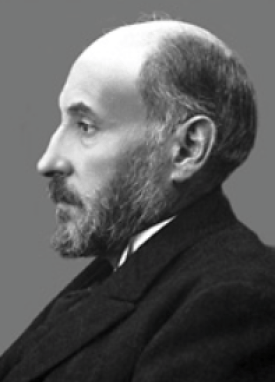
Santiago Ramón y Cajal ignored his father. His father wanted him to study medicine. Instead Ramon y Cajal liked to draw and take photographs.
Santiago Ramón y Cajal (1852-1934) was born on 1 May at Petilla de Aragón, Spain. His father, Professor of Applied Anatomy in the University of Saragossa, wanted him to study medicine, which he eventually did, under the direction of his father.
In 1873, after graduating in medicine at Saragossa, he served as an army doctor. He took part in an expedition to Cuba in 1874-75, where he contracted malaria and tuberculosis. On his return to Spain he became an assistant in the School of Anatomy in the Faculty of Medicine at Saragossa and then, at his own request, Director of the Saragossa Museum (1879). In 1877 he obtained the degree of Doctor of Medicine at Madrid and in 1883 he was appointed Professor of Descriptive and General Anatomy at Valencia. In 1887 he was appointed Professor of Histology and Pathological Anatomy at Barcelona and later in Madrid (1892).

In 1880 he began to publish scientific works, such as the Manual de Histología normal y Técnica micrográfica (Manual of Normal Histology and Micrographic Technique), the Manual de Anatomía patológica general (Manual of General Pathological Anatomy), New Ideas on the Fine Anatomy of the Nerve Centres in 1894.
Ramón y Cajal published more than 100 articles in French and Spanish scientific periodicals, especially on the fine structure of the nervous system, the brain and spinal cord. For his work he was awarded the Member of the Royal Academy of Sciences of Madrid (1895); the Royal Academy of Medicine of Madrid (1897); the Spanish Society of Natural History, and the Academy of Sciences of Lisbon (1897); and Honorary Member of the Spanish Medical and Surgical Academy.
He was also made honorary Doctor of Medicine of the Universities of Cambridge (1894) and Würzburg (1896) and Doctor of Philosophy of the Clark University in Worcester, America, in 1899 in addition to many honorary posts around Europe.
He was awarded a Nobel prize in 1906 for his work on the nervous system.
In 1879 Ramón y Cajal married Doña Silvería Fañanás García. They had four daughters and three sons.
Apart from his astounding medical career he continued with photography and drawing, particularly anatomical drawings. The top photograph is a selfie. He also built his own cannons. It was through this marriage of art and photography with science and medicine that led to his fascination with microscopic technologies and the inner workings of the body’s cells.
He adapted a technique of staining cells to view them under a microscope, and used this to create many anatomical drawings, as well as theories on how the brain works. For example, he proposed that neurons in the brain don’t form a single, connected network. Instead, he believed they are separate and individual, although they communicate with each other. This discovery formed the basis of modern neuroscience.

Santiago Ramón y Cajal died in Madrid on 18 October 1934.
His remarkable drawing are resurrected in the 2017 book (essays by neuroscientists), The Beautiful Brain: The Drawings of Santiago Ramón y Cajal, by Larry W Swanson, Eric Newman, Alfonso Araque, and Janet M Dubinsky.

Ramón y Cajal was an artist first and scientist second, not following the traditional path of medicine, but combining his instincts to draw what he saw underneath the microscope. He described neurons as ‘mysterious butterflies of the soul, the beating of whose wings might one day, who knows, reveal the secrets of mental life.’
http://www.nobelprize.org/nobel_prizes/medicine/laureates/1906/cajal-bio.html

nice 😀
are those links at the bottom = references?
Thank you. The links are references and source information.
You really make it appear really easy together with your presentation however I to find this matter to be really one thing which I feel I might never understand. It kind of feels too complex and extremely extensive for me. I am taking a look forward to your subsequent submit, I’ll try to get the grasp of it!